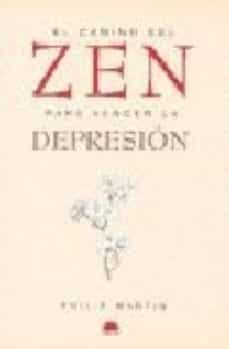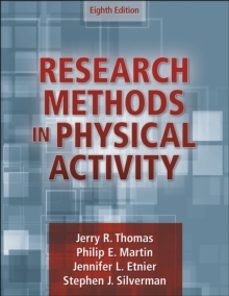Imprescindibles
Más vendidos Libros más leídos eBooks más leídos Todos los libros Todos los libros Autores destacados Series y sagas
Recomendados Libros recomendados Autores destacados Libros que inspiran Vidas con historia LGTBIQ+ English books
Ficción
Literatura Contemporánea Estudios literarios Clásicos Cuentos Poesía Teatro Libros de bolsillo Sagas literarias
Géneros literarios Novela romántica y erótica Novela negra Novela histórica Narrativa fantástica Novela de ciencia ficción Novela de terror Narrativa de humor Narrativa de viajes
No Ficción
Ciencias y tecnología Biología Ciencias Ciencias naturales Divulgación científica Informática Ingeniería Matemáticas Medicina Salud y dietas Formación Idiomas Estilo de vida Libros de Cocina Guías de viaje Narrativa de viajes Deportes Libros de Juegos Manualidades
Humanidades Autoayuda y espiritualidad Ciencias humanas Derecho Economía y Empresa Psicología y Pedagogía Filosofía Sociología Filología Biblioteconomía Estudios filológicos Estudios lingüísticos Estudios literarios Historia y crítica de la Literatura
Infantil
Juvenil
#Jóvenes lectores Narrativa juvenil Clásicos adaptados Libros Wattpad Libros Booktok Libros de influencers Libros de Youtubers Libros Spicy Juveniles Libros LGTBIQ+ Temas sociales Libros ciencia ficción Libros de acción y aventura Cómic y Manga Juvenil Cómic Juvenil Manga Shonen Manga Shojo Autores destacados Jennifer L. Armentrout Eloy Moreno Nerea Llanes Hannah Nicole Maehrer
Libros de fantasía Cozy Fantasy Dark academia Hadas y Fae Romantasy Royal Fantasy Urban Fantasy Vampiros y hombres lobo Otros Misterio y terror Cozy mistery Policiaca Spooky Terror Thriller y suspense Otros
Libros románticos y de amor Dark Romance Clean Romance Cowboy Romance Mafia y amor Romance dramatico Romance dramatico Romcom Sport Romance Otros Clichés Enemies to Lovers Friends to Lovers Hermanastros Slow Burn Fake Dating Triángulo amoroso
Cómic y Manga
Novela gráfica Novela gráfica americana Novela gráfica europea Novela gráfica de otros países Personajes, series y sagas Series y sagas Star Wars Superhéroes Cómics DC Cómics Marvel Cómics otros superhéroes Cómics Valiant
eBooks
Literatura Contemporánea Narrativa fantástica Novela de ciencia ficción Novela de terror Novela histórica Novela negra Novela romántica y erótica Juvenil Más de 13 años Más de 15 años Infantil eBooks infantiles
Humanidades Autoayuda y espiritualidad Ciencias humanas Economía y Empresa Psicología y Pedagogía Filosofía Historia Historia de España Historia Universal Arte Cine Música Historia del arte
Ciencia y tecnología Ciencias naturales Divulgación científica Medicina Salud y dietas Filología Estudios lingüísticos Estudios literarios Historia y crítica de la Literatura Estilo de vida Cocina Guías de viaje Ocio y deportes
PHILIP MARTIN
Recibe novedades de PHILIP MARTIN directamente en tu email
Filtros
Del 1 al 2 de 2
ONIRO 9788495456199
El camino del zen para vencer la depresión es un libro que relaciona las prácticas e ideas básicas del budismo zen con el proceso de curar la depresión, considerada por el autor desde una perspectiva totalmente nueva. Se trata de una guía para, en última instancia, crecer, comprender y realizarse, utilizar nuestros propios recursos, y aprender a leer y escuchar las señales a nuestro alrededor. Para Philip Martin la depresión "no es sólo una enfermedad del cuerpo y la mente, sino también del corazón", y nos conduce a través de sus realidades, de los miedos y dudas intrínsecas a dicha condición. El autor muestra la elección fundamental a la que hacemos frente: ¿salimos corriendo o bien nos enfrentamos a nosotros mismos y a nuestro miedo de manera directa?. Este hermoso y sencillo libro es muy accesible tanto para personas con poca o ninguna experiencia en el zen como para estudiantes veteranos de budismo, y nos enseña a través de capítulos breves, inspiradores e instructivos a integrar los ideales y prácticas del zen en nuestra vida cotidiana.
Ver más
Tapa blanda
HUMAN KINETICS 9781718201026
This is the loose-leaf version of Research Methods in Physical Activity, Eighth Edition, which offers students a less expensive, printed version of the text. Research Methods in Physical Activity, Eighth Edition, systematically guides students through the research process, introducing research methods, tools, and analysis techniques specifically for kinesiology and exercise science disciplines, including the subdisciplines of physical therapy, rehabilitation, and occupational therapy. The eighth edition continues its legacy with the authors' trademark humor and is now enhanced with a new full-color layout.This reputable text provides step-by-step information for every aspect of the research process. Part I presents an overview of the research process, from preparing the research plan to understanding ethical issues in research and writing. Part II introduces statistical and measurement issues in research.Part III presents various approaches to research and methodology-including qualitative, quantitative, and mixed methods-while scholarly contributors offer advice for addressing sociohistorical, experimental, epidemiological, and philosophical research questions. Part IV details how to develop and organize research papers and presentations, and it includes guidance for describing results for publication in a scientific journal. Statistical tables and guides are available in the appendix.
Ver más
Tapa blanda
Del 1 al 2 de 2




























